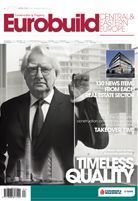Existing office buildings actually do have the opportunity to lower their operating costs and attract more eco-conscious tenants. Such changes can be carried out in stages and without a green certificate
Mladen Petrov
It is never too late to change. The Getty Center, the famous art museum in Los Angeles designed by renowned American architect Richard Meier (turn to page 50 to read our interview with this architectural icon), was opened in 1997. Its rich programme of exhibitions and events has always generated a great deal of media copy. However, in 2005 it was the real estate press that was turning its lights onto the museum. This is when it became the first existing building in America to obtain a LEED ecological certificate. Three years later the museum gained a more advanced, silver certificate, as all the architect's efforts to make people focus on sustainable development finally bore fruit.
Shortcuts known to allDevelopers are becoming more and more familiar with the ecological






























































